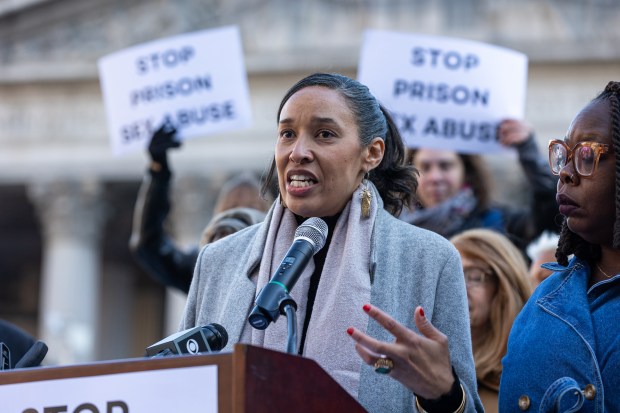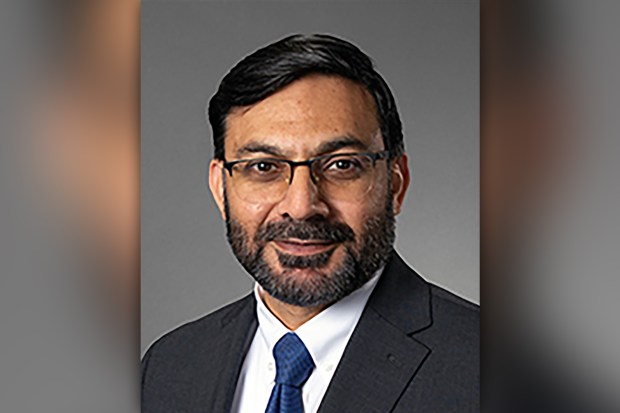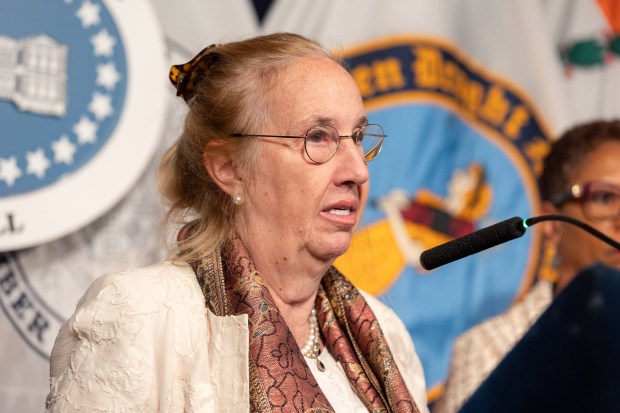The number of people on probation who have been rearrested on a year over year basis has swelled by 19% citywide during the tenure of Commissioner Juanita Holmes, despite her claims in a recent City Council hearing that numbers were declining, internal agency figures obtained by the Daily News show.
In fiscal year 2024, which covers July 2023 through June 2024, 5,118 adult probationers were rearrested, the internal data shows. In fiscal 2025, which ended June 30, the number shot up by nearly 1,000 rearrests to 6,108. Rearrests rose in every borough led by the Bronx and Queens, which showed 26% and 22% increases respectively in that period.
The number of rearrests is a significant indicator of success in an agency tasked with monitoring people on probation so they don’t re-offend.
The statistics obtained by The News come from an internal statistics “dashboard” which Holmes touted in the July 28 hearing, but then declined to allow the Council or the public to see.
In the hearing, Holmes claimed rearrests were down.
“The New York City Department of Probation has also experienced a reduction in recidivism, homelessness, substance abuse and as well other significant areas all of which is monitored and supported by our new technology,” Holmes said.
Later, she added, “Here’s my thing: Recidivism is not up.”
Holmes was responding to assertions from Council Member Sandy Nurse, who cited a different set of statistics in the Mayor’s Management Report which she said, contrary to Holmes’ claims, showed recidivism among probationers was increasing.
 New York City Councilwoman Sandy Nurse speaks during a Stop Prison Sexual Abuse rally in Foley Square in Manhattan, New York on Wednesday, Nov. 13, 2024. (Shawn Inglima for New York Daily News)
New York City Councilwoman Sandy Nurse speaks during a Stop Prison Sexual Abuse rally in Foley Square in Manhattan, New York on Wednesday, Nov. 13, 2024. (Shawn Inglima for New York Daily News)
Shown the internal numbers by The News, Nurse said an outside audit of the agency was needed.
“Commissioner Holmes has said she makes decisions driven by data, but fails to present accurate data in our hearings,” Nurse, the chair of the Criminal Justice Committee, told The News Thursday. “She has misrepresented rearrest trends, failed to produce any metrics for programs she is introducing and appears to suspend or demote staff who disagree with her. The agency needs to be audited.”
In response to questions from The News, Probation spokeswoman Regina Graham said Holmes was referring to “month to month recidivism rates that showed a reduction.” Probation official Antonio Pullano said in the hearing, “In January we had 4.1% clients rearrested, going down since January to now 3.1%.”
The “dashboard” at the center of the debate was developed under Chief of Information Razwan Mirza before Holmes sidelined him, stripped his responsibilities and staff and even gave his office to her newly hired niece Demmi Slaughter, as The News reported Thursday. Mirza resigned from the agency Tuesday though he is up for a new job at City Hall, The News reported.
 Chief Information Officer Razwan Mirza. (NYC.gov)
Chief Information Officer Razwan Mirza. (NYC.gov)
While pointing to some declining rates, at points during the council hearing Holmes blamed any increases in rearrests on statistical issues that trace back to her predecessor in the role.
“What was being reported before was a skewed number,” Holmes said, adding later, “I’m about transparency and reporting the right numbers. Not smoke and mirrors to make it seem successful.”
Holmes also declared, “I walked into an agency that didn’t have data.”
The commissioner before Holmes was Ana Bermudez who served as Probation Commissioner for eight years, 2014 to 2022.
Bermudez was reappointed by Mayor Adams in 2022 after running Probation for both of Mayor de Blasio’s two terms. She stayed on until December 2022 and remains a member of a Mayoral advisory board on equity and racial justice.
“This could not be farther from the truth,” Bermudez told The News by email, referring to Holmes’ comments. “During my tenure, we fine tuned the data analysis practices and created quarterly Probation Performance Roundtable meetings. At these meetings, all manner of data were discussed and analyzed, resulting in strategies to combat negative trends. We didn’t just analyze aggregate data; we disaggregated the data to try to pinpoint the sources of the trends.”
Bermudez wrote these analyses revealed areas of concern which were then drilled down upon, such as the fact that “too many” people were being rearrested within three months of being placed on probation – leading to the creation of teams that would visit new clients at home within 48 hours of their probation sentence.
“As to ‘skewed numbers’ or ‘smoke and mirrors,’ I cannot comment on that without knowing how exactly she believes that the numbers could be described as such,” Bermudez said. “All I can say is that our Assistant Commissioner of Management and Performance (who had decades of experience in City government and data) calculated our reported numbers in the way that they had been historically reported for the MMR.”
Holmes, during the hearing, refused a request from Council Member Gale Brewer for access to the agency’s “dashboard.” Holmes said it was for “internal use actually.” “ It’s just for us to be discerning of our metrics,” she said.
“That’s the kind of data that might be helpful to us but that’s helpful to know it won’t be available,” Brewer replied.
 Gale Brewer speaks during a press conference before a New York City Council meeting at City Hall in Manhattan, New York on Wednesday, Dec. 20, 2023. (Shawn Inglima for New York Daily News)
Gale Brewer speaks during a press conference before a New York City Council meeting at City Hall in Manhattan, New York on Wednesday, Dec. 20, 2023. (Shawn Inglima for New York Daily News)
The News has also obtained internal Probation statistics on the average caseloads actually carried by probation officers.
In the Council hearing, Holmes was taken to task on heavy caseloads that make it difficult for probation officers to pay full attention to clients.
Holmes said the American Parole and Probation Association recommends a caseload of 35 to 55 per officer. The News reached out to the APPA to confirm this, but the association didn’t respond.
According to probation spokeswoman Graham, the average caseload in the agency is 48 cases – just shy of the ceiling Holmes mentioned.
“No one is carrying a caseload above 55 except for the Queens gun branch,” Holmes said in the hearing.
But figures obtained by The News from the same secret dashboard from June show point to higher caseload numbers in several key probation units.
The client development unit has an average caseload of 67 citywide including 76 per officer in the Bronx and 63 in Brooklyn. The Bronx sex offender unit has an average of 68 cases per officer. The caseload for the Criminal Investigation Unit is 91 citywide. Caseloads for the Neon programs in Manhattan and Queens are 62 and 69 respectively.
Jake Oliver, a spokesman for the United Probation Officers Association, said caseloads can exceed 100 per office in adult supervision. While adult services units indeed average 48, the same units used to have about 25 per officer.
“My members are also expected to handle their own cases in various court parts and boroughs, often on the same day,” said UPOA President Dalvanie Powell. “These increases are the direct result of high attrition—over 200 officers have resigned or retired—while only 91 have been hired since this administration took office.
 Probation Commissioner Juanita Holmes (Barry Williams for New York Daily News)
Probation Commissioner Juanita Holmes (Barry Williams for New York Daily News)
Aaron Cagwin, a spokesman for the state Division of Criminal Justice Services, which sets standards for law enforcement agencies, said in fact the state does not set a recommend caseload.
“DCJS guidance does recommend smaller caseloads for certain specialized supervision units when resources allow,” Cagwin said. “Those handling sex offenses, DWI cases, or individuals with significant mental health needs are encouraged to have reduced caseloads.
“These are recommendations, not mandates, and actual caseloads are determined by department based on staffing and resources.”
Said probation spokeswoman Graham, “We are actively recruiting to increase our workforce.”
Chris Sommerfeldt contributed to this story.
Originally Published: August 14, 2025 at 9:47 AM EDT
